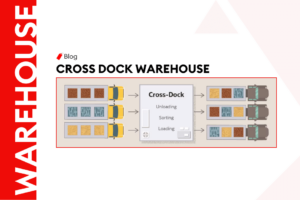Home » Services » Door to Door » North America & Europe » Canada
Strengthening Trade Ties: Facilitating Growth and Prosperity between the UAE and Canada
UAE - Canada
Overview
Explore our key logistical gateways that boost UAE-Canada trade efficiency and reliability.
Airport Details
Canada's vast landscape is served by several airports that play a critical role in international cargo operations:
- Toronto Pearson International Airport
Airport Code: YYZ
Cargo Handling Capacity: Over 1 million metric tonnes annually
Note: A pivotal hub with advanced cargo management systems and direct connectivity to major global markets.
- Vancouver International Airport
Airport Code: YVR
Cargo Handling Capacity: Approximately 300,000 tonnes per year
Note: Features comprehensive logistics facilities including temperature-controlled storage and expedited customs services.
- Montréal–Trudeau International Airport
Airport Code: YUL
Note: Renowned for its efficient cargo handling and strategic access to North American and European markets.
Sea Port Deatails
Canada is also equipped with several key seaports that support robust cargo operations, enhancing the UAE-Canada trade corridor:
- Port of Vancouver
Location: Vancouver, British Columbia
Port Code: USVAN
Number of Berths: 29
Cargo Handling Capacity: Handles over 141 million metric revenue tons annually
Note: Known for its natural deep-water harbors and state-of-the-art intermodal logistics capabilities.
- Port of Montreal
Location: Montreal, Quebec
Port Code: CAMTR
Number of Berths: 100
Cargo Handling Capacity: Facilitates the movement of approximately 36 million metric tonnes per year
Note: Offers strategic advantages with access to major inland transportation routes.
- Port of Halifax
Location: Halifax, Nova Scotia
Port Code: CAHAL
Number of Berths: 34
Note: Features ultra-modern facilities and is a leading port for break-bulk and project cargo.
Frequently Asked Questions (FAQ)
What are the most efficient shipping routes between the UAE and Canada?
Several efficient routes for shipping between the UAE and Canada includes sea routes via the Atlantic Ocean and air routes directly from Dubai to Toronto or via European hubs. Estimated transit times vary from 14 hours by air to 30 days by sea.
What documents are required for shipping goods between the UAE and Canada?
For both imports and exports, essential documents include the Commercial Invoice, Bill of Lading or Air Waybill, Certificate of Origin, and Packing List. Additional documents such as Export Licenses or Safety Certificates may be required depending on the nature of the goods.
How do holidays in Canada affect shipping schedules?
Significant Canadian holidays like Canada Day, Labour Day, and Christmas may impact shipping schedules due to closures of customs offices and reduced operations at ports. Planning ahead is crucial to avoid any delays.
What payment methods are accepted for trade between the UAE and Canada?
A variety of payment methods including telegraphic transfers, letters of credit, direct bank transfers, and online payment platforms ensure security and compliance with international financial regulations.
Are there any specific restrictions on goods shipped between the UAE and Canada?
Yes, certain goods such as pharmaceuticals, food products, weapons, hazardous materials, and culturally significant artifacts may require special permits or are subject to restrictions. It's important to check both UAE and Canadian regulations before shipping these items.
Related Articles
Anything you need, We’re here to Help

Chat With Us
Effortlessly schedule your next shipment with us for reliable and timely delivery.

Request a Quote
Receive a personalized shipping quote that meets your specific logistic needs.









